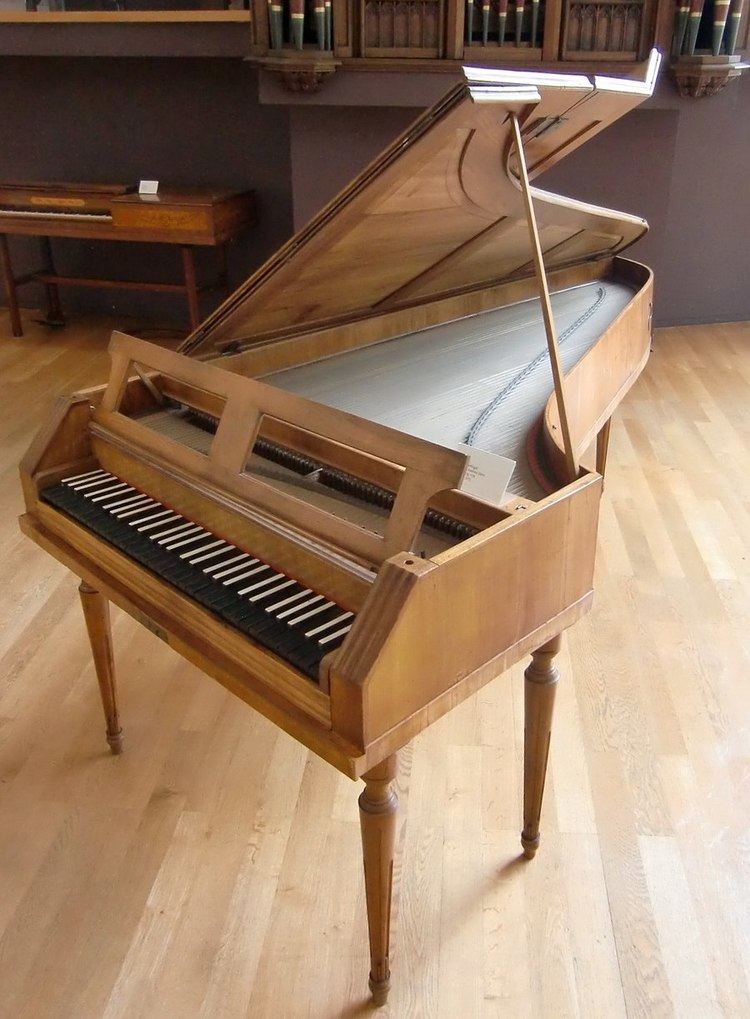Key E-flat major Composed 1784 (1784) | Catalogue K. 449 Scoring Piano
orchestra | |
 | ||
Movements Three (Allegro vivace, Andantino, Allegro ma non troppo) | ||
The Piano Concerto No. 14 in E-flat major by Wolfgang Amadeus Mozart, written in 1784, is a piano concerto, catalogued as K. 449.
Contents
It is the first composition he entered into a notebook of his music he then kept for the next seven years, marking down main themes, dates of completion, and other important information. From this notebook we have the information that he finished the concerto on February 9.
In the same year in succession he wrote several concertos, and in a letter to his father that May, wrote of the 15th and 16th concertos (in B flat and in D, KV. 450 and 451) that he "could not choose between them" but that "the one in E flat [No. 14] does not belong at all to the same category. It is one of a quite peculiar kind...". The 14th is regarded as being the first of the mature series of concertos Mozart wrote, and indeed, commentators such as Girdlestone and Hutchings valued it as one of the best, particularly as all three movements are of the highest standard.
Movements
This concerto has three movements:
- Allegro vivace. (3/4 time).
- Andantino. (B flat major and 2/4 time).
- Allegro ma non troppo. (2/2 time, 6/8 time).
Works written in 1784 include besides this concerto the six piano concertos 14-19, the Quintet in E flat for Piano and Winds, along with several piano works - the Sonata in C Minor noteworthy, one string quartet (the "Hunt"), and several sets of orchestral dances also. Works by other composers known to Mozart from just around this time include the 80th symphony (in D minor) and 2nd cello concerto of Joseph Haydn; Michael Haydn had published two sets of quartets the year before (also the year of the two Mozart violin-viola duos which legend has it were produced to help that composer fulfil a commission, which Alfred Einstein regards as a dubious tale), and Carl Stamitz and Ignaz Pleyel each another set of six (Pleyel released a further set in 1784.) A Pleyel cello concerto (in C) was also released at some point between 1782-4 (Pleyel being a composer whose quartets, at least, Mozart rated highly.)
Allegro vivace
The first movement begins in a 3/4 time signature, an unusual feature among Mozart's 27 piano concertos. Among them only this, the eleventh and twenty-fourth open with a movement in 3/4. It is also traditional, in the tutti of a classical concerto, for there to be little key adventuring. There are several reasons for this, but the upshot is that, the less this is true, the harder it becomes to distinguish the tutti from the opening of a classical-era symphony.
The first phrase of this concerto begins ambiguously. A unison E flat followed by a C, then a G, is followed by the dominant chord's leading tone (A natural) trilled up to the dominant - Bb. It's interesting that this progression seems to suggest a dominant cadence in the dominant key of Bb. In other words, Cmin to F to Bb (ii - V - I in Bb). There is an immediate modulation, through a fiery C minor passage, into B flat major. Here a possible second theme is heard, played by strings, winds not coming in until its later strain (near the modulation back into E flat).
Also interesting about this concerto is that the first movement ventures off from the normal conception of the concerto. Usually, when it comes time for the cadenza at the end of the recapitulation, the soloists will have a cadential trill on the tonic after which the orchestra will play part of the ritornello leading to the I 6/4 at which point the soloists performs the cadenza. However, the cadential trill is interrupted by the bass and cello and the trill never sounds like it technically ends. Shortly thereafter, the I 6/4 arrives and the cadenza begins and everything continues on as normal.
Allegro ma non troppo
Girdlestone (p 187, Mozart and his Piano Concertos) writes that the gait of this finale is "neither that of a gallop, nor of a race, nor even of a dance, but just of a swinging walk, swift and regular, and the virtue of its refrain, with its sketchy outline and its 'sillabato' diction... rests in its rhythm rather than in its melody." Further he notes that while this rondo can be divided into contrasting sections, the appearance on the page is very different from what falls on the ear, which is almost monothematic: "When, score in hand, one notes each return of the first subject... it is possible to pick out the four expositions of the [rondo] refrain and the three couplets... but on hearing it one's impression is that the refrain never leaves the stage".
